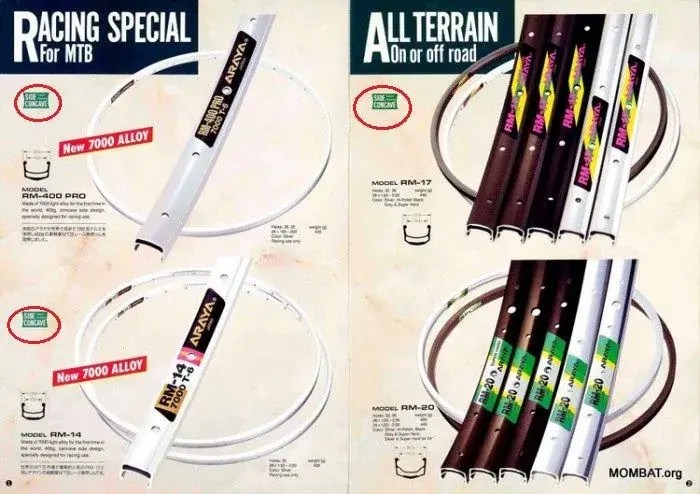sherlylock
rBotM Winner
- Feedback
- View
In chatting to a fellow retrobike member last night whilst selling some Araya rims (nice to meet you Alex!). Talking about measuring rim wear on secondhand wheels - usually the method is to run a straight edge across the rim to see how concave they are.
But some (if not all) Araya rims from the early nineties have concave sidewalls by design, making them quite hard to measure for wear.
So why design a sidewall with a concave section?
The only thing we could think is it acts as a centralising feature for the brake pad (once it's bedded in presumably)?
Anyone got any other theories for the reason for this design?

Cheers!
But some (if not all) Araya rims from the early nineties have concave sidewalls by design, making them quite hard to measure for wear.
So why design a sidewall with a concave section?
The only thing we could think is it acts as a centralising feature for the brake pad (once it's bedded in presumably)?
Anyone got any other theories for the reason for this design?

Cheers!


